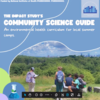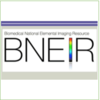Project 1: Early-life metal exposure and cognitive aging
Tracy Pushon presents at European Workshop on Laser Ablation in Bern, Switzerland
CEC Boston team presents Metals & Environmental Justice summer camp curricula
What Does a Tooth Know?
2021
Nov
18
. 10/5/2021. “Portable X-ray Fluorescence as a Rapid Determination Tool to Detect Parts per Million Levels of Ni, Zn, As, Se, and Pb in Human Toenails: A South India Case Study.” Environ Sci Technol, 55, 19, Pp. 13113-13121. Publisher's VersionAbstract






 Joe Mangano of the Radiation and Public Health Project is cataloging baby teeth for Project 1. The teeth were originally collected as part of a 1958-1970 study by Washington University in St. Louis, which measured build-up of radioactivity from above-ground atomic bomb test fallout. Project 1 will look at level of metals in the teeth and will re-contact the teeth donors for cognitive evaluation.
Joe Mangano of the Radiation and Public Health Project is cataloging baby teeth for Project 1. The teeth were originally collected as part of a 1958-1970 study by Washington University in St. Louis, which measured build-up of radioactivity from above-ground atomic bomb test fallout. Project 1 will look at level of metals in the teeth and will re-contact the teeth donors for cognitive evaluation.
 Felicitas Bidlack of the Forsyth Institute (leaders in dental and craniofacial research) works with Project 1 on preparation and analysis of the baby teeth samples collected in the 1950s-1970s as part of the St. Louis Baby Tooth study.
Felicitas Bidlack of the Forsyth Institute (leaders in dental and craniofacial research) works with Project 1 on preparation and analysis of the baby teeth samples collected in the 1950s-1970s as part of the St. Louis Baby Tooth study.
 Laura Germine at McLean Hospital's Laboratory for Brain and Cognitive Health Technology and the McLean Institute for Techology in Psychiatry is developing innovative web-based tools for measuring cognition in Project 1.
Laura Germine at McLean Hospital's Laboratory for Brain and Cognitive Health Technology and the McLean Institute for Techology in Psychiatry is developing innovative web-based tools for measuring cognition in Project 1.
 Project 1's quantification of metals in baby teeth samples are being conducted by Brian Jackson's Trace Element Analysis Core at Dartmouth using laser ablation inductively coupled plasma mass spectrometry (LA-ICP-MS).
Project 1's quantification of metals in baby teeth samples are being conducted by Brian Jackson's Trace Element Analysis Core at Dartmouth using laser ablation inductively coupled plasma mass spectrometry (LA-ICP-MS).
 Our Center is based that the Harvard T.H. Chan School of Public Health where the labs of Marc Weisskopf and David Christiani (Project 1), Quan Lu (Project 2), and Tamarra James-Todd (Community Engagement Core) are located in the Department of Environmental Health. The Research Experience and Training Cordination Core (Susan Korrick) and the Administrative (Quan Lu) and Research Translation Core (Trina von Stackelberg) are also based in the Department of Environmental Health. Brent Coull and Xihong Lin's groups (Data Management and Analysis Core) are in the Department of Biostatistics.
Our Center is based that the Harvard T.H. Chan School of Public Health where the labs of Marc Weisskopf and David Christiani (Project 1), Quan Lu (Project 2), and Tamarra James-Todd (Community Engagement Core) are located in the Department of Environmental Health. The Research Experience and Training Cordination Core (Susan Korrick) and the Administrative (Quan Lu) and Research Translation Core (Trina von Stackelberg) are also based in the Department of Environmental Health. Brent Coull and Xihong Lin's groups (Data Management and Analysis Core) are in the Department of Biostatistics.
